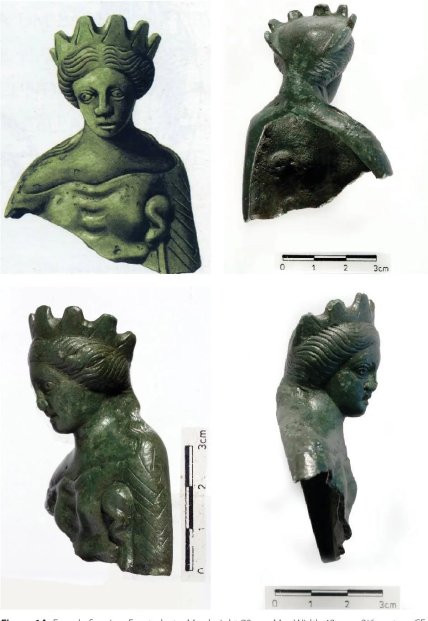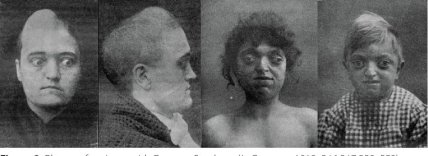Not just a skilled sculptor, but a genetic mutation: A unique Roman figurine with an extraordinary face has been discovered in Portugal (photo).
Sometimes, archaeological discoveries not only shed light on historical facts but also enhance our understanding of that era. In northern Portugal, at the ancient Roman city of Bracara Augusta (modern-day Braga), archaeologists uncovered a bronze figurine dated to the 2nd century AD. This find, depicting a female figure with unusual facial features, may represent a historical instance of Crouzon syndrome—a rare genetic disorder.
The artifact was discovered at the summit of Mount Chiviada during excavations. Its features exhibit physical anomalies such as:
- exophthalmos (protruding eyes),
- exotropia (eye misalignment),
- facial asymmetry.
Researchers employed iconodiagnostics—a method that analyzes medical conditions through artistic representations—to suggest the presence of craniofacial dysostosis (Crouzon syndrome). This condition results in the premature fusion of skull bones, leading to characteristic deformities.

Dr. Rui Morais, who examined the statuette, noted the intricacy of its craftsmanship. The head features a diadem of seven stylized towers, likely symbolizing the gates of the Roman city. The expressive eyes, asymmetrical lips, and tilted oval face are rendered with remarkable accuracy.
Unlike traditional depictions of Roman goddesses, the figurine holds not a cornucopia but a snake wrapped around a staff. This symbol is associated with health deities such as Asclepius and Hygieia. Scholars propose that the statuette may represent a priestess or a deity linked to healing, possibly Salus—the Roman goddess of health.
This discovery raises questions about the treatment of individuals with physical differences in ancient societies. Some researchers believe such traits may have been regarded as divine signs or spiritual gifts, similar to shamanic traditions.

This bronze figurine is the first possible case of Crouzon syndrome depicted in Greco-Roman art. Its discovery not only enriches our understanding of the history of medical anomalies but also aids in comprehending the sociocultural context of Ancient Rome.
Previously, "Telegraph" reported how black animals suffer due to their coloration. Meanwhile, white animals enjoy certain privileges.